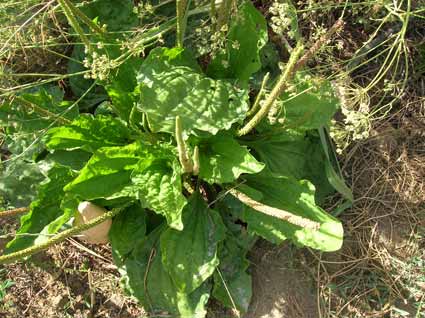
Plantain / Plantago major

Plantaginaceae
Plantago
major
Ribwort, Snakeweed, Cuckoos Bread, Englishman’s Foot, The Leaf of Patrick, Patrick’s Dock, Ripple Grass, St. Patrick’s leaf, Slan-lus, Snakebite, Waybread, Waybroad, Weybroed (Anglo-Saxon), White man’s foot.
Astringent, anti-catarrhal, bacteriostatic, diuretic, demulcent, expectorant.
Leaves , seeds
Mucilage, pentacyclic triterpene, oleanolic acid, glycosides including aucubin, enzymes - emulsin and invertin, potassium salts, silicic acid, chlorogenic acid, neochlorogenic acid, fumaric acid, benzoic acid, hydroxycinnamic acid, ursolic acid, citric acid, tannins, Flavonoids; apigenin, luteolin, scutellarin, baicalein, nepetin, hispidulin, plantagoside. Polysaccharides; arabinose, galactose, xylose.
It is useful as a poultice, decoction or in an ointment for the treatment of wounds. The crushed leaves can be placed directly to the skin to stop bleeding and ease the pain of bee-stings and insect bites. Internally, it soothes urinary tract infections and irritations. It can be used as a gargle and also as a wash for conjunctivitis. Plantain is also useful for treating diarrhea, because of its astringent properties and is also useful for haemorrhages and haemorrhoids. It helps heal the skin (silica). A gentle expectorant, it is useful for coughs where there is inflammation. It is interesting to note that the seeds of this plant and its relative, Plantago psyllium, are laxative. It depresses the secretion of mucous, especially in the respiratory system and is, therefore, useful for colds, catarrh, sinusitis, bronchial congestion, hay fever and asthma. It can also be used for congestion in the middle ear, glue ear and ear infections. Other conditions it is useful in are cystitis, prostatis, colic and prostatic enlargement. It can also be used for snake Bite apparently . I am a little hesitant to test this out myself :)
https://www.theherbalist.com.au/herb_gallery/plantain